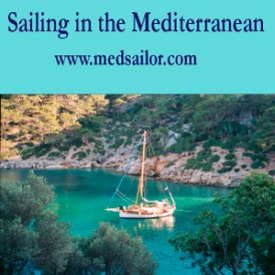Podcast: Play in new window | Download (Duration: 25:29 — 23.4MB)
Subscribe: Apple Podcasts | Email | RSS | More
Full Course is available at:
For $59.99
Lesson Summary:
Audio GED Prep Social Studies Lesson 2
North and South America, Australia
The United States and Territories
The United States is a relatively new country. Started out as settlements from many countries like Roanoke and Jamestown that eventually developed into the 13 colonies, who were loosely bound together, though they had many differences.
The colonies fought a war for independence against Great Britain and won, eventually becoming the United States of America. Gradually, new territories were admitted to the “Union” and the United States grew.
For a short while, the United States was split into two countries: the United States of America and the Confederate States of America during the period of the Civil War. At the end of the war, the two countries rejoined.
Many believed in the “manifest destiny” of the United States, which meant that the country should expand from one coast to the other. This is the case today, with the country being split into 50 states, with two states, Alaska and Hawaii, being not attached to the other 50.
The United States also has control over a variety of territories around the world, including Puerto Rico, the Virgin Island, Guam and American Samoa. There are also U.S. military installations throughout the world, with many in Europe and Asia.
The largest river in the United States is the Mississippi, which branches out into many tributaries. There are two main mountain ranges: the Rocky Mountains and the Appalachian Mountains.
• Canada
Canada is the second largest country in the world land wise after Russia, though most of its population lives close to its border with the United States. About 75 percent of Canadians (out of around 33 million citizens) live within 100 miles of the U.S. borders. It has more coastline than any other country, because it is bordered by the Atlantic, Pacific, and Arctic Oceans.
Many parts of Canada were settled by French explorers and the influence of French language and culture continues to this day. Other parts of Canada were controlled by Great Britain. Today, both English and French are official languages in Canada.
Instead of states, Canada is divided into provinces and territories. There are ten provinces, such as Ontario, Quebec, Alberta, and British Columbia, and three territories: The Northwest Territories, Nunavut, and Yukon. Canada includes many different islands as part of its territory including Prince Edward Island.
• Mexico
Mexico was the site of many powerful civilizations including the Olmec and the Maya. Spain conquered the region in the 16th century and turned it into a colony, but it achieved its own independence in the 19th century.
Today, it is a country that is bordered by the United States in the north and the countries of Central America in the south. It is bordered by the Pacific Ocean in the west and the Gulf of Mexico in the east. It includes a long peninsula that is south of the U.S. state of California called “Baja California”.
In terms of land area, it is just about three times the size of the state of Texas, though its population is around 120 million.
Mexico has 31 different states that are all self governed, and there is a special Federal District that belongs to the entire federation at a whole instead of to a specific state.
• Central America
Central America is considered part of North America, and is a narrow bridge of land that connects North America with South America. On the north, it is bordered by Mexico, on the south by the South American country of Columbia. On the east, is the Caribbean Sea, and on the west is the Pacific Ocean.
Central America includes the countries of Belize, Guatemala, Honduras, Nicaragua, Costa Rica, and Panama. Also in the region are the islands of Cuba, Haiti, the Dominican Republic, and the islands of the Bahamas, and other Caribbean islands. Most of these countries have tropical climates. The culture is closely related to that of Mexico and South America, and includes that of both Spanish colonists, and the indigenous peoples such as the Mayans.
Panama is especially notable because of the Panama Canal, a canal that lets ships pass through from the Caribbean Sea to the Pacific Ocean without having to go around South America. This canal was once owned by the United States, but was given back to Panama.
• South America
South America is a continent below Central America, also named after the Italian explorer Amerigo Vespucci. It is bordered by the Pacific Ocean, the Atlantic Ocean and the Caribbean Sea. It includes a variety of countries including Argentina, Bolivia, Brazil, Chile, Colombia, Ecuador, French Guiana, Guyana, Paraguay, Peru, Suriname, Uruguay, and Venezuela.
The countries of South America speak a variety of languages, such as Spanish and Portuguese, due to the influence of European colonists. Other countries have English, French, and even Dutch as official languages. There are some who speak versions of the languages of the indigenous peoples such as the Inca, the Maya and the Aztecs. These powerful civilizations only fell out of power when European colonists arrived.
Brazil is by far the largest and most powerful country. They use a variety of currencies, ranging from the US dollar to the Euro, to the peso and others.
• Australia and Oceania
Australia is a large island continent and a number of smaller islands, including Tasmania. It is surrounded by the Pacific and Indian Oceans. Though it is the smallest continent, it is also the world’s sixth-largest country. The country was discovered by the Dutch in the 17th Century, and it was later colonized by Great Britain in the 18th Century. In 1901, six colonies came together into a single country: the Commonwealth of Australia.
Today, Australia has six states, New South Wales, Queensland, South Australia, Tasmania, Victoria and Western Australia, and two mainland territories, the Australian Capital Territory and the Northern Territory.
Today, English is the official language, but there are also a great number of Aboriginals, who were the original inhabitants of the island before European settlers arrived.
• Antarctica
Antarctica is the southernmost continent, the coldest and driest on earth. It is largely uninhabited, with only a few scientific settlements with only a few thousand people. There are very few plants and animals in Antarctica, and no countries, though the laws of the countries who run the research stations apply.
Antarctica is divided into several regions, including the Antarctic Peninsula, East Antarctica, the Ross Sea, West Antarctica, and the South Pole.
An allegory is a story in which the characters, settings, or events have a deeper symbolic meaning such as George Orwell’s “Animal Farm”.
Sources: http://en.wikipedia.org/wiki/Eastern_Europe
http://russiapedia.rt.com/basic-facts-about-russia/
http://en.wikipedia.org/wiki/Asia
©2015 Franz Amussen, All Rights Reserved
If you are interested in learning to sail listen to the podcast “Sailing in the Mediterranean”
at http://www.medsailor.com



